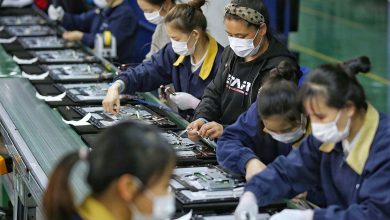Prioritizing the Department of Health

By July 1, it will be the Marcos II Administration’s responsibility to keep track of COVID-19 and other pandemics that may affect the country. This early, it should already be planning on ways, methods, approaches, and interventions to further improve and future-proof pandemic management locally. But, to date, a new Health secretary is still to be nominated.
Transition between administrations is a crucial period, and the remaining 28 days are barely enough to allow for effective turnover even during normal times. Fact is, despite the present lull, the Philippines is still enduring a public health crisis. The Department of Health (DoH) should have been given top priority in the Cabinet selection process.
At present, COVID is still manageable, although Metro Manila’s COVID positivity rate, reproduction number, and hospital care utilization rate have all been going up in the last few weeks. In Makati City, for instance, active COVID cases have gone up from a low of 13 on May 23 to a count of 35 as of May 31. This is a significant jump — the count almost tripled in over a week.
A DoH weekly bulletin stated that COVID-19 cases nationwide on May 23-29 were up by over 8% from the previous week. Cases totaled 1,317 as of May 30, with 22 cases with Omicron subvariant BA.2.12.1. Despite the uptick, however, Metro Manila remains in the low-risk category, and Alert Level 1 — the lowest level — is retained, for now.
A DoH official last week said it was up to the incoming Marcos administration if it would continue the National Task Force Against COVID-19 (NTF) and the National Vaccination Operations Center (NVOC). This matter would have been resolved already had a Heath Secretary-designate been named ahead, and transition meetings have been initiated.
DoH Undersecretary Myrna Cabotaje was quoted as saying, “We just await kung ano ’yung directions ng susunod na administration. Of course, we will also defer kung sino man ’yung bagong secretary.” She added, “So bahala na po ’yung susunod na administration kung ano po ’yung direksyon, kung magkakaron sila ng interagency, itutuloy ba ’yung parang structure ng NTF o gagawa sila ng panibagong structure.” (“We just await whatever directions come from the next administration.” She added, “So it is up to the next administration what the direction will be, if they will have an interagency, if they would continue the sort of structure of the NTF or if they will make a new structure.”)
And this, to me, is where the problem lies. Up until a new secretary is nominated, nothing will move at the DoH. Everybody will be waiting for direction and personnel changes before anything can get moving again. And this process can take days, to weeks, to months. An early transition would have allowed for the briefing of incoming officials and more planning with the transition team.
Meantime, so as not to be delayed, Cabotaje said DoH was already endorsing to concerned bureaus some of the tasks of the NVOC. The question is, will incoming officials opt to continue with the present administration’s initiatives or change them altogether? There are many ongoing activities related to monitoring, testing, and vaccination.
Add to the problem the emergence of Monkeypox, which is seemingly spreading globally. As far as I know, there are no known testing protocols and vaccines specifically for Monkeypox, and this situation severely limits the effectiveness of border control. Other than symptoms, the pox will have no outward manifestations that will allow for easier identification at the borders of those infected with it.
While it is far-fetched that Monkeypox will become another COVID-19, officials cannot be absolutely certain that it will not spread locally. Effective border control and bio-surveillance thus become more significant. Unlike with COVID, we cannot be just one step ahead of the virus at best. More viruses are sure to emerge, and more pandemics are sure to occur. We need to be two to three steps ahead.
In the case of COVID, we have always been just a step ahead of the next surge. In the near future, COVID mutations will continue to outpace medical advances intended to eliminate the virus. Medical science will continue to play catch-up at least until the end of 2022. We need to continuously study and innovate, as complacency was, is, and will always be the enemy.
Testing, contact tracing, localized lockdowns, physical distancing, and masks may be tried and tested interventions during COVID, but they will not always work in the future, particularly for non-airborne viruses. We should be preparing for future pandemics, after living through a very devastating one in the last two years. We need to review which ad hoc interventions will have to be made permanent, and what interventions may be required in similar events in the future.
More important, we should look into continuity and permanence of time-bound strategies and interventions that actually worked, and then perhaps improve on them. We also need permanent institutions devoted to dealing with pandemics and the like. Otherwise, as government restarts on July 1, so does our pandemic management. We cannot afford this.
The economy is not the priority but public health is. As the world saw in 2020 and 2021, a pandemic can drop humanity to its knees. A major resource required for economic development is human capital. But plagues, pandemics, and diseases all weaken human capital and impact people’s capacity and ability to be productive. Public health issues, depending on their scale, can quickly stunt economic growth and exacerbate poverty.
We are still to recover from the negative impact of COVID on the global economy since 2020. The pandemic is far from over locally and abroad. A new surge is ongoing in other parts of the world. A surge can reoccur here. Meantime, the war in Ukraine is exacerbating issues involving trade. Food and fuel inflation is now slowing down most economies, and making life more difficult for lots of people.
With many goods in short supply, and shortages driving up prices and thus inflation, people are already edgy. The least that the government can do for them is to make sure that another COVID surge — or problems with Monkeypox and other public health concerns — is effectively kept at bay. Early transition over at DoH is critical to ensuring this.
Marvin Tort is a former managing editor of BusinessWorld, and a former chairman of the Philippine Press Council




